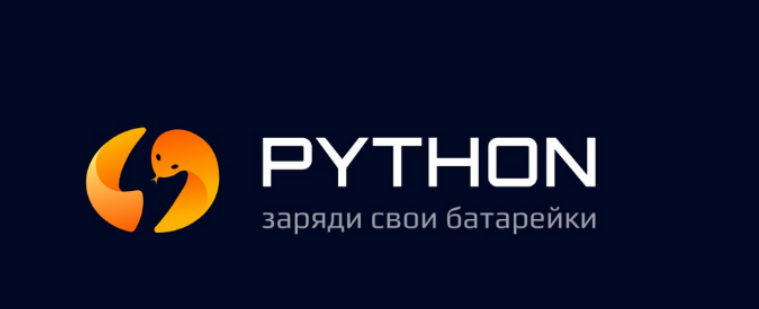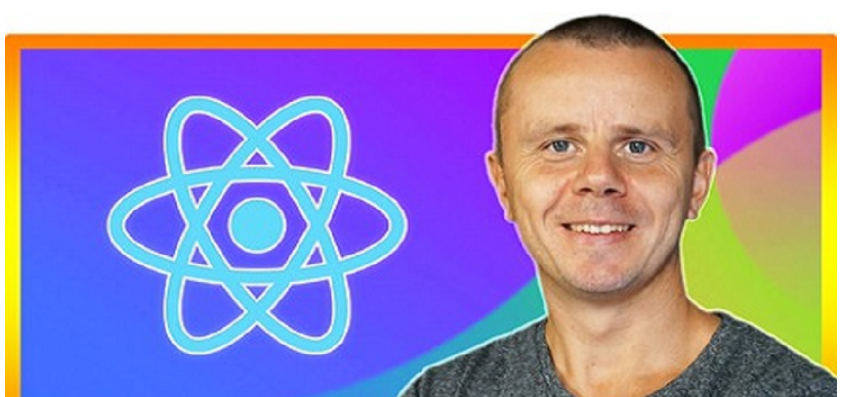Приложение
Как установить приложение на iOS
Смотрите видео ниже, чтобы узнать, как установить наш сайт в качестве веб-приложения на домашнем экране.
Примечание: This feature may not be available in some browsers.
Вы используете устаревший браузер. Этот и другие сайты могут отображаться в нём некорректно.
Вам необходимо обновить браузер или попробовать использовать другой.
Вам необходимо обновить браузер или попробовать использовать другой.
Фото и видео [Вадим Закиров] Закрытый клуб нейро-фотостокеров на Май (2024)
- Пользователь tttx
- Дата Фото и видео обработка

ОПИСАНИЕ:
Закрытый клуб нейро-фотостокеров на Май [Вадим Закиров]
Для кого создан закрытый клуб нейро-фотостокеров?
- Для тех, кто хочет быть в теме того, что происходит в мире искусственного интеллекта и нейросетей
- Для тех, кто генерирует картинки в нейросетях и хочет, чтобы они продавались регулярно
Что ждет участников закрытого клуба?
- Стоковые результаты
2 онлайн-встречи , где модератор клуба расскажет о результатах работы по генерации нейро-изображений и своих самых передовых подходах к созданию нейро-изображений для фотостоков
- Вопросы и ответы
У вас будет возможность задать вопрос напрямую модератору клуба
- Новости
Вы узнаете...
Музыка [Архэ] [Анна Виленская] Кто придумал рок (2024)
- Пользователь tttx
- Дата Музыка

ОПИСАНИЕ:
Рок — это дитя культуры Африки и Англии. На лекции поговорим о том, как так получилось, из блюза за 20 лет появились блюз, рок-н-ролл, ритм-н-блюз и рок, кто давал им названия, кто придумал использовать перегруз гитары. Разберемся, чем все-таки рок отличается от поп-музыки (если отличается!).
Лектор Анна Виленская - музыковед.
ПРОДАЖНИК:
СКАЧАТЬ:
Сад и огород [Марина Берестова] Гид «Идеальный цветник» 2.0 (2024)
- Пользователь tttx
- Дата Сад и огород

ОПИСАНИЕ:
В этом гиде вы найдете
- 90 самых устойчивых растений, которые подойдут для средней полосы России и для небольших и средних цветников
- 100 пар-сочетаний, из которых вы выберете сочетания для своего цветника, чтобы все сказали «Вау, хочу также!»
- Урок, как с помощью парных сочетаний растений из ГИДа составить свой идеальный цветник на любую площадь и любой вкус
- Таблица — конспект со всеми растениями из ГИДа с ссылками на каталоги питомников и нормами посадки (шт на кв.м.)
- Общий чат для поддержки и вопросов — получите доступ сразу после покупки.
- Подходит для средней полосы России и 3, 4 и 5 зон морозостойкости с морозами...
Сад и огород [Инфоурок] Современное растениеводство: технологии и методы для получения высоких и качественных урожаев (2022)
- Пользователь tttx
- Дата Сад и огород

ОПИСАНИЕ:
Программа курса
Цель
Совершенствование профессиональных знаний и навыков слушателей в области современного растениеводства
Задачи
1. Изучить основные принципы растениеводства.
2. Рассмотреть влияние климатических условий на рост и развитие растений.
3. Проанализировать методы защиты растений от болезней и вредителей.
4. Актуализировать знания о технологиях уборки различных культур.
5. Познакомиться с методами хранения и переработки сельскохозяйственной продукции.
6. Изучить способы повышения почвенного плодородия.
Категории обучающихся
Специалисты сельского хозяйства и агрономы, фермеры, садоводы, работники сельскохозяйственных...
Сад и огород [Надежда Лебедева] Все о клематисах: влияние температурного фактора на прохождение фенофаз (2024)
- Пользователь tttx
- Дата Сад и огород

ОПИСАНИЕ:
Актуальность. Изучены особенности прохождения фенологических фаз вегетации и цветения 20 сортов рода Clematis L. в агроклиматических условиях Ставрополя. Установлены даты наступления фенофаз в различные годы. Выявлен сдвиг этих сроков, связанный с количеством тепла, полученного растением в период, предшествующий фазе.Методы. Объектом изучения послужили 20 сортов клематиса коллекции Ставропольского ботанического сада, принадлежащих двум садовым группам - интегрифолия (Integrifolia) и жакмана (Jackmanii). Изучение особенностей феноритма проводилось в 2018-2022 гг. с использованием общепринятой методики фенологических...
Пикап / Соблазнение [Александра Малахова] Как раскрыть свою сексуальность (2024)
- Пользователь tttx
- Дата Пикап / Соблазнения / Знакомства

ОПИСАНИЕ:
Гайд по раскрытию сексуальности, чтобы не стесняться и получать удовольствие. Вместо форумов в интернете, плохих советов от друзей и разочарований в постели.
Обучение для тебя, если
- Ты не знаешь, как говорить с партнером о своих желаниях
- Начнешь свободно делиться любыми фантазиями и сексуальными сценариями
- Ты не понимаешь, что и как тебе нравится в сексе
- Определишь, что вызывает у тебя желание, а что тормозит его
- Ты чувствуешь стыд и не можешь кайфовать от процесса
- Решишься на то, что давно хотелось попробовать
- Понять, как устроено либидо и от чего зависит...
Пикап / Соблазнение [Lora.Kava] Игры 18+ (2024)
- Пользователь tttx
- Дата Пикап / Соблазнения / Знакомства

ОПИСАНИЕ:
Сборник игр включает в себя 11 разных сексуальных игр, которые обеспечат разнообразие в сексуальной жизни партнёров! Некоторые игры усилят близость и доверие в паре, а некоторые добавят искры и раскрепостят партнёров.
Список игр
- Alias 18+
- Совпадение?
- Сладкоежка
- БДСМЧИК
- Не останавливайся!
- Я бы ...
- Секс прятки
- Холодно и горячо
- Угадай кто я
- Порно-кастинг
- Карты страсти
- Телеграмм бот
- Доступ к боту остается навсегда после оплаты сборника игр
СКАЧАТЬ:
Пикап / Соблазнение [Алекс Мэй] Секс - инструкция по применению (2024)
- Пользователь tttx
- Дата Пикап / Соблазнения / Знакомства

ОПИСАНИЕ:
Секс - инструкция по применению [Алекс Мэй]
Эксклюзив для мужчин в новых форматах
Лучшие техники секса, закрывающие все вопросы интимного плана. Ваши водительские права в мир женского наслаждения.
Станете лучшим любовником у любой женщины.
Короткая программа выступления:
- Какие простые, но при этом очень МОЩНЫЕ техники сделают вас незабываемым и уникальным любовником?
Такого наслаждения женщине 100% никто не подарит. Кроме вас. И член для этого вообще не потребуется
- Что делать, если у неё не получается достичь оргазма?
Расскажу о причинах, как понять что у вашей женщины всё в порядке и какие действия нужны, чтобы всё...
Пикап / Соблазнение [Алекс Мэй] Психология отношений, мужской мозг, женский мозг (2024)
- Пользователь tttx
- Дата Пикап / Соблазнения / Знакомства

ОПИСАНИЕ:
Психология отношений, мужской мозг, женский мозг [Алекс Мэй]
Новый семинар в новых форматах
Дорогие, коротко и без лишних вступлений...
Этот семинар - твоя основа и одновременно счастливый билет в мир отношений, который хочешь ты.
Короткая программа выступления:
- Как стать той самой женщиной, которую мужчина искренне обожает, ценит и очень боится потерять?
- Пошаговый план твоего сверх-успеха у любого мужчины.
- Секретный Код мужского мозга: расшифруем вместе как он мыслит, думает и видит этот мир.
- Биологическая задача любого мужика, заложенная в него природой и как это знание позволит тебе стать максимально...
SEO & SMM [Hack Aff] С нуля до миллиона на gambling сайтах! (2024)
- Пользователь tttx
- Дата SEO и SMM

ОПИСАНИЕ:
С нуля до миллиона на gambling сайтах! [Hack Aff]
►Друзья, открываю закрытый канал — полное обучение с нуля, до полноценного SEO аффа в нише гемблинга.
Сразу хочу обратить внимание, обучившись SEO-гембле в вертикаль полегче — можно заходить с ноги.
►Обучение построено в формате «смотри-повторяй».
Без воды — только качественный видео-материал в высоком разрешении и качественным звуком.
В конце обучения у вас на руках полноценный SEO-сайт, а также все необходимые знания дальнейшей работы с ним.
►Инвайты будут выдаваться сразу после оплаты доступа.
В канале будут открыты комментарии к урокам, там вы сможете общаться между...
Администрирование [Игорь Ким] [Stepik] Введение в статистику и проверку гипотез (2024)
- Пользователь tttx
- Дата Администрирование

ОПИСАНИЕ:
Введение в статистику и проверку гипотез [Stepik] [Игорь Ким]
Этот курс познакомит вас с основами статистики и А/Б тестирования и поможет систематизировать уже имеющиеся знания.
Кому будет полезен курс:
- аналитикам;
- дата-сайентистам;
- тем, кто только начинает знакомиться с статистикой;
- тем, кто знаком с основами статистики, но знания не систематезированы
- познакомитесь с понятиями случайная величина и распределение;
- рассмотрите популярные дискретные и непрерывные распределения;
- изучите центральную предельную теорему и закон больших чисел;
- разберетесь в свойствах...
Программирование [Вадим Шиховцов] Современные средства Python разработчика. IDE: PyCharm, VSCode и Spyder (2023)
- Пользователь tttx
- Дата Программирование

ОПИСАНИЕ:
Современные средства Python разработчика. IDE: PyCharm, VSCode и Spyder [Специалист] [Вадим Шиховцов]
Содержание курса охватывает важные темы современной разработки: создание проекта, рефакторинг, работу с git репозиторием, тестирование, профилирование.
Курс посвящен созданию проектов на Python с помощью наиболее используемых средств разработки, таких как PyCharm, Spyder и VSCode.
Вы получите ответы на вопросы:
Что такое средства разработки и где они применяются?
Что такое текстовый редактор с «батарейками»?
Что такое IDE и как среда помогает писать и улучшать код?
Проект, как основное понятие для разработки в...
Администрирование [GetAnalyst] Анализ требований: от идеи до задач в разработку (2024)
- Пользователь tttx
- Дата Администрирование

ОПИСАНИЕ:
Обучающие материалы для самостоятельного обучения, в которых разбираются реальные задачи системных аналитиков. С их помощью вы сможете самостоятельно осваивать теорию на практике, структурировать знания по системному анализу и подготовиться к собеседованию.
10 вебинаров
ПРОДАЖНИК:
СКАЧАТЬ:
Администрирование [Полина Комкова] Паттерны проектирования микросервисной архитектуры и нотация С4 (2024)
- Пользователь tttx
- Дата Администрирование

ОПИСАНИЕ:
Паттерны проектирования микросервисной архитектуры и нотация С4 (21 апреля 2024) [systems education] [Полина Комкова]
Воркшоп по проектированию архитектуры информационных систем для системных аналитиков, которые хотят познакомиться с популярными паттернами проектирования микросервисной архитектуры и научиться их визуализировать в диаграммах нотации С4
Задания практического воркшопа:
- Выбрать кейс
- Выбрать подходящую архитектуру для своей системы
- Выбрать подходящие БД
- В случае микросервисной системы выбрать стиль взаимодействия микросервисов и подходящие паттерны проектирования
- Описать архитектуру своей ИС в виде...
Администрирование [Анна Вичугова, Дилара Валитова] UML-диаграммы последовательности для аналитика (2024)
- Пользователь tttx
- Дата Администрирование

ОПИСАНИЕ:
UML-диаграммы последовательности для аналитика: ликбез и примеры использования [systems education] [Анна Вичугова, Дилара Валитова]
Воркшоп (2,5 часа)
Апрель 2024 год
1 день (ср)
1 раз в два месяца
17:00-20:00 МСК
от 2 000 рублей
Аналитик использует диаграммы последовательности для описания межсистемного или внутрисистемного взаимодействия.
Схемы UML sequence помогают разработчикам определить методы классов, вызовы и ответы веб-API.
На воркшопе за 2 часа вы построите sequence диаграммы и убедитесь что
- Cтроить sequence диаграммы несложно;
- UML диаграммы удобно читать и легко понимать;
- UML — отличный инструмент...
Программирование [Артем Егоров] [Stepik] Продвинутый python: заряди свои батарейки (2024)
- Пользователь tttx
- Дата Программирование

ОПИСАНИЕ:
Продвинутый python: заряди свои батарейки [Stepik] [Артем Егоров]
Данный курс позволит вам познакомиться со всеми основными модулями стандартной библиотеке python (за исключением модулей asyncio, multiprocessing, threading) Вы получите массу новых знаний, решите уйму задач на программирование, причем задания будут как по написанию функций, так и созданию классов, что требует знание ООП. Курс позволит выйти вам на новый уровень. Особенность его заключается в практической направленности: практически в каждом разделе мы будем применять полученные знания и вы научитесь работать с файловой системой, отправлять письма, научитесь логированию и...
Программирование [Udemy] [Bogdan Stashchuk] React - Полный Курс по React и Redux (2024)
- Пользователь tttx
- Дата Программирование

ОПИСАНИЕ:
Требования:
- Базовые знания HTML, CSS и JavaScript
- Для новичков этот курс включает курс по предварительным требованиям
- Начинающие фронтенд программисты
- Опытные программисты, желающие изучить библиотеку React
Описание:
Если вы хотите стать успешным React программистом - этот курс для вас. Это лучший курс для понимания React, изучения всех ключевых функций React, а также закрепления всех полученных знаний на практике с помощью десятков задач.
React - это самая популярная библиотека для создания пользовательских интерфейсов...
Программирование [Яндекс.Практикум] Python-разработчик. Часть 3 из 8 (2023)
- Пользователь tttx
- Дата Программирование

ОПИСАНИЕ:
СПРИНТ 6
Django ORM. Модели
- Анфиса и базы данных
- Описание таблиц с помощью классов
- Описание связей между моделями
- Наследование от абстрактных моделей
- Миграции
- Django shell. CRUD-операции в Django ORM
- Заполнение БД и выгрузка информации из неё
Админ-зона Django
- Создание суперпользователя. Регистрация моделей в админке
- Локализация и перевод
- Тонкая настройка админ-зоны
Django ORM. Получение информации из БД
- Django Debug Toolbar
- SELECT и FROM через ORM
- Фильтрация WHERE: методы filter() и exclude
- Условия AND, OR, NOT. Q-объекты
- Сортировка ORDER BY, ограничение LIMIT и сдвиг OFFSET
- Получение отдельных...
Программирование [Яндекс.Практикум] Python-разработчик. Часть 2 из 8 (2023)
- Пользователь tttx
- Дата Программирование

ОПИСАНИЕ:
Бэкенд на Django
СПРИНТ 4
1) Что вас ждет в этом спринте:
- Что вас ждёт в этом спринте
- Добро пожаловать в команду
- Фреймворк Django
- Задачи на спринт
2) Создание проекта:
- Создание Django-проекта. Приложения
3) Пути и view-функции:
- Протокол HTTP: стандарт для запросов и ответов
- Планирование адресов и конвертеры путей
- Распределение адресов по приложениям
- View-функции: от запроса до ответа
4) Верстка для бэкенда:
- Веб-страницы: язык HTML
- Структура HTML-документа
- CSS: стили, селекторы и синтаксис
- Иерархия HTML-документа и наследование стилей
- Фреймворк Bootstrap: быстрая HTML-вёрстка
5) HTML и шаблоны Django:
- HTML в...
Программирование [Н. Честнов и др.] Python и ИИ-технологии с нуля за 4 месяца, 12 проектов с помощью ChatGPT (2023-2024)
- Пользователь tttx
- Дата Программирование

ОПИСАНИЕ:
Почему сейчас?
Программировать теперь гораздо проще, чем раньше. ChatGPT и другие ИИ-инструменты совершили переворот. Они позволяют вам писать и переписывать целые куски кода, готовые SQL-запросы и приложения и помогать обучаться с небывалой скоростью.
Теперь, все что вам нужно: умение сформулировать задачу на русском/английском языке и время/желание.
Вот почему в основу этого курса легли 2 следующих подхода:
1. Использовать ChatGPT и других ассистентов по-максимуму, для того чтобы они вам помогали писать и исправлять готовые куски кода.
2. Отталкиваться от готовых работающих бизнес-приложений и примеров. Вы не будете писать с...
Программирование [Антон Щербак] [Stepik] Работа с файлами в Python (2024)
- Пользователь tttx
- Дата Программирование

ОПИСАНИЕ:
Работа с файлами в Python [stepik] [Антон Щербак]
Вы можете ответить, с каким флагом лучше открывать файл? Чем отличается rt+ от ab+? Что такое файловый поток и когда нужно пользоваться библиотекой io? Как рекурсивно прочитать содержимое всех файлов в дереве папок? Как правильно работать с файловой системой? Почему нужно валидировать файлы и в каких случаях нужно использовать base64? Мы ответим на каждый из этих вопросов и покажем вам, как правильно использовать новые знания.
Чему вы научитесь:
- Научитесь правильно выставлять флаги при работе с файлами
- Узнаете, чем отличается текстовый файл от бинарного
- Разберетесь...
Личностный рост [Мария Щербакова] 9 период 2024-2043. Модуль 2. Фэн-шуй помещений (2024)
- Пользователь tttx
- Дата Саморазвитие / Психология / Эзотерика

ОПИСАНИЕ:
9 период 2024-2043. Модуль 2. Фэн-шуй помещений: потенциал и активация процветания [Мария Щербакова]
Итак, изменению качества энергии времени, и в связи с этим глобальным изменениям, а также рассмотрению личной удачи, был посвящен первый модуль, 9 период 2024-2043. Модуль 1. Потенциал времени: глобальные процессы и личная удача.
Эти модули не связаны последовательностью информации, всего лишь темой 9-го периода.
Это означает, что можно изучать второй без первого, первый без второго, сначала второй а потом первый, и т.п.
Но не скрою, что понимания и инсайтов будет гораздо больше у тех, кто прошел первый модуль.
Программа:...
Астрология [Ирина Шульгина] Измены и как их избежать. Позиция астрологии (2024)
- Пользователь tttx
- Дата Астрология

ОПИСАНИЕ:
Измены и как их избежать. Позиция астрологии (Ирина Шульгина)
Кто не мечтает об идеальной личной жизни? И мало кто хочет делиться своим счастьем в отношениях. Но есть личности, которым запреты нипочём, а моногамия – сомнительное удовольствие. Кто же эти «страшные» люди, каковы их мотивы, реально ли их вычислить астрологическими методами, можно ли избежать измен? Об этом вы узнаете на вебинаре «Астропоказатели склонности к изменам».
Темы:
Измена – так ли всё просто с самим понятием
Сексуальный потенциал – является ли фактором измен
Интимные предпочтения и расхождение желаемого с действительным
Универсальные показатели склонности к...
Психотерапия [Николай Медведев] [EduNote] Как работать с пациентом планирующим суицид? (2024)
- Пользователь tttx
- Дата Психотерапия

ОПИСАНИЕ:
Как работать с пациентом планирующим суицид? [EduNote] [Николай Медведев]
В терапии может быть множество скрытых сообщений о предстоящем суициде. Иногда нам кажется, что пациент просто манипулирует нами.
Но вдруг оказывается, что все это было всерьез. Какие существуют признаки? На что ориентироваться? Нас пугает вина и ответственность.
Иногда нам кажется, что именно неприятные инсайты из нашей работы оказались последней каплей.
Мы вспоминаем, что у пациента были близкие люди, что они потеряли его. Вдруг они начнут связываться с нами?
Что сказать его родственникам? Его семье? Его друзьям?
Бывает так, что наши пациенты совершают самоубийство...
Личностный рост [Валентин Шишкин] Онлайн-клуб Кинетический имидж. Май (2024)
- Пользователь tttx
- Дата Саморазвитие / Психология / Эзотерика

ОПИСАНИЕ:
Для чего создан клуб?
- Клуб создан, чтобы объединить людей, увлеченных кинетикой
- Это пространство, в котором каждый член клуба может совершенствовать жесты, позы и движения под руководством профессиональных кинетиков - амбассадоров Школы кинетического имиджа, обсуждать свои успехи, задавать вопросы и обмениваться опытом
✓ только начинаете знакомство с кинетикой и хотите узнать о ней больше
✓ присматриваетесь к обучению или думаете о консультации
✓ знаете что такое кинетика и желаете заниматься совершенствованием своего кинетического имиджа
✓ хотите ежемесячно получать разборы от...
Зеркала проекта
Зеркала PirateHUB на случай блокировки основного адреса. Эти ссылки безопасны для использования. Также всегда актуальная ссылка доступна на этом сайте.
Рабочее s1 piratehubРабочее s2 piratehub
Рабочее s3 piratehub
Рабочее s4 piratehub
Недоступно в РФ openssource
Пользователи онлайн
- AnnaTK
- tatianas0302
- ergoline
- Mike0758
- tezraus
- Анна Т
- rudi
- KayaRina
- Лейни
- ЖУК
- Kyrymka
- 8AAA8
- mylanguages
- asa1007
- Overseere
- D1m
- Jurchan
- Anton Wexler
- GK13
- alex577
- Phoebus
- tati2603
- Didal
- милка95
- tolli68
- Maral86
- nsrwntjo
- kim15
- ОльгаСербия
- bleike
- cipemoni
- O.lga
- ymikhlik
- scientist.vik
- valerasuccess2010
- krasnodarstroy23
- olga1986
- партнер
- Tichon
- ashottccylr
- cucumber11
- various110
- Maksky
- Sportsmen 1986
- Destord
- Dsmirnova80
- kreldif
- promoperm
- Platinov
- Kozlodoev
Всего: 1,999 (пользователей: 178, гостей: 1,821)
Отзывы о курсах
-
-
KettirinkaКурс называется "Растим гения", а в начале обучения автор говорит, что взяла эту информацию из центра, где работают со сложными детьми (с отставание в развитии). Где в её курсе система - мне не очень понятно. Автор записала видео со своей дочкой, которая манерничает перед камерой, а мама на кадром умиляется. Описания упражнений не даны, а из видео с ребёнком не всегда понятны. Качество видео хорошее, есть даже какие-то раздаточные материалы. Ну, какие-то идеи можно из видео почерпнуть, если человек давно в теме. Но есть и откровенные ошибки. Поэтому курс в целом не рекомендую.
-
О нас
PirateHUB (ex. openssource) - это сообщество, объединяющее единомышленников, стремящихся к повышению своих профессиональных навыков и освоению новых областей. На нашем сайте вы можете бесплатно скачать самые актуальные и популярные курсы, книги, тренинги и вебинары, а также материалы по различным направлениям.
Пользователи онлайн
- AnnaTK
- tatianas0302
- ergoline
- Mike0758
- tezraus
- Анна Т
- rudi
- KayaRina
- Лейни
- ЖУК
- Kyrymka
- 8AAA8
- mylanguages
- asa1007
- Overseere
- D1m
- Jurchan
- Anton Wexler
- GK13
- alex577
- Phoebus
- tati2603
- Didal
- милка95
- tolli68
- Maral86
- nsrwntjo
- kim15
- ОльгаСербия
- bleike
- cipemoni
- O.lga
- ymikhlik
- scientist.vik
- valerasuccess2010
- krasnodarstroy23
- olga1986
- партнер
- Tichon
- ashottccylr
- cucumber11
- various110
- Maksky
- Sportsmen 1986
- Destord
- Dsmirnova80
- kreldif
- promoperm
- Platinov
- Kozlodoev
Всего: 1,999 (пользователей: 178, гостей: 1,821)

